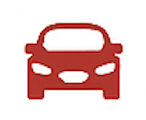Understanding the Rich and Varied Car Culture of Peru
The Diversity of Vehicles on Peruvian Roads
Peru's roadways are populated by a remarkable mix of vehicles, from Japanese sedans and Korean compacts to aging Volkswagen Beetles and Toyota Land Cruisers. The country's mountainous terrain and varied climates have shaped the types of cars that are common in different regions. In the coastal cities like Lima and Trujillo, compact cars dominate the streets due to their fuel efficiency and ease of parking.
In contrast, the highland and jungle regions often favor 4x4 vehicles. These are better suited to navigate rugged terrain and are more reliable during the rainy seasons. Older models of Toyota Hilux pickups and Mitsubishi Pajeros are especially prized for their durability and ability to handle off-road conditions. This regional diversity in vehicle preference illustrates how Peru's geography plays a key role in shaping its car culture.
Public transportation and private mototaxis also form a critical part of the country's vehicle ecosystem. In smaller towns and cities, three-wheeled mototaxis outnumber standard taxis, offering a cheap and accessible form of transport for many Peruvians. These vehicles are often brightly painted and decorated, adding a distinctive flair to local streetscapes.
Import Trends and the Used Car Market
Peru's automotive market is heavily reliant on imported vehicles, both new and used. Japan is a significant source of used cars, and the port of Callao processes a large volume of second-hand imports each year. These vehicles are often refurbished before resale in domestic markets, providing affordable transportation options to a broad segment of the population.
One notable aspect of this market is the widespread conversion of right-hand drive vehicles to left-hand drive to comply with Peruvian traffic regulations. While controversial from a safety perspective, these conversions remain common practice among importers and garages across the country. Government regulations have attempted to limit these practices in recent years, but enforcement varies.
Alongside Japanese imports, South Korean and Chinese manufacturers have gained market share by offering new cars at competitive prices. Brands like Kia, Hyundai, and Chery are increasingly visible in urban dealerships. Their popularity has grown not only due to cost but also because of expanded after-sales service and parts availability.
Classic and Collectible Car Scenes
Despite the dominance of practical and utilitarian vehicles, Peru also has an enthusiastic niche community centered around classic and vintage cars. In Lima and Arequipa, weekend car meets draw collectors who own restored Ford Mustangs, Chevrolet Bel Airs, and classic VW Beetles. These events serve as both exhibitions and social gatherings for automotive enthusiasts.
Local clubs often organize vintage car rallies that traverse scenic routes along the Andes or coastal highways. These gatherings celebrate Peru's automotive history and are a testament to the dedication of hobbyists who preserve older models despite the challenges in sourcing original parts. Some enthusiasts even import parts from abroad or repurpose locally available materials to maintain authenticity.
Street Modifications and Urban Customization Trends
In urban centers like Lima and Cusco, a vibrant subculture exists around vehicle modification. Young car owners often personalize their vehicles with aftermarket rims, tinted windows, LED lights, and audio systems. This is especially common among taxi drivers and delivery drivers, who spend long hours on the road and invest in upgrades for both style and comfort.
There is also a growing interest in tuning cars for performance, although this scene remains relatively small due to legal and financial constraints. Street racing is illegal in Peru but occurs sporadically in remote areas or late at night in urban industrial zones. Police enforcement of these activities has increased in recent years due to safety concerns.
The Role of Cars in Rural Mobility and Economic Life
In rural Peru, cars and light trucks are more than just personal transport—they are essential economic tools. Farmers and small-scale merchants rely on pickups and vans to bring produce to market and transport goods across difficult terrain. Vehicles like the Toyota Hilux, Nissan Frontier, and Suzuki Carry are common choices due to their endurance and load capacity.
Many vehicles in rural areas serve multiple functions: acting as taxis during the day and cargo carriers at night. This flexibility is critical in areas with limited infrastructure and infrequent public transportation. The high utility value of these vehicles means they are maintained for as long as mechanically possible, often far beyond their intended lifespan.
Garage mechanics and informal repair shops play a major role in keeping rural vehicles operational. In many cases, mechanical knowledge is passed down through families, and improvisation is a key skill. Spare parts are often salvaged or repurposed, giving rise to a culture of ingenuity that defines rural car maintenance in Peru.
Regulatory Environment and Road Safety Challenges
Peru has made strides in regulating its automotive sector, but challenges remain in enforcement and safety. Mandatory vehicle inspections (Revisión Técnica) are required in major cities, but compliance is inconsistent in rural areas. Similarly, emissions testing is only strictly enforced in some urban jurisdictions.
Road safety is a major issue in Peru. The country has a high rate of traffic accidents, many of which are attributed to poor road conditions, lack of signage, and limited driver education. The government has implemented public awareness campaigns and road safety programs, but sustained improvements require long-term investment in infrastructure and enforcement.
Despite these hurdles, there is progress. The construction of bypass roads and improvements to the Pan-American Highway have enhanced connectivity and travel safety in recent years. New traffic cameras and increased patrol presence in urban centers have also contributed to better compliance with traffic laws.
